Protein A Resin Market Size 2024-2028
The protein a resin market size is forecast to increase by USD 721.6 million, at a CAGR of 10.03% between 2023 and 2028.
Major Market Trends & Insights
- North America dominated the market and accounted for a 44% growth during the forecast period.
- By the Type - Recombinant protein a segment was valued at USD 547.60 million in
- By the segment2 - segment2_1 segment accounted for the largest market revenue share in
Market Size & Forecast
- Market Opportunities: USD 101.13 million
- Market Future Opportunities: USD 721.60 million
- CAGR : 10.03%
- North America: Largest market in
Market Summary
- The market experiences significant growth due to the increasing demand for monoclonal antibodies (mAbs) and biosimilars in various industries, including pharmaceuticals and biotechnology. Protein A resin, a type of chromatography matrix, plays a crucial role in the production of these biologics. According to recent reports, The market is expected to witness substantial expansion, driven by the rising adoption of this technology in the biopharmaceutical sector. Despite this growth, the market faces challenges, such as the lack of skilled professionals to operate and maintain the equipment, which may hinder its progress.
- However, advancements in automation and continuous process improvements aim to mitigate these challenges. The market's continuous evolution underscores its importance in the production of biologics and its potential for future innovations.
What will be the Size of the Protein A Resin Market during the forecast period?
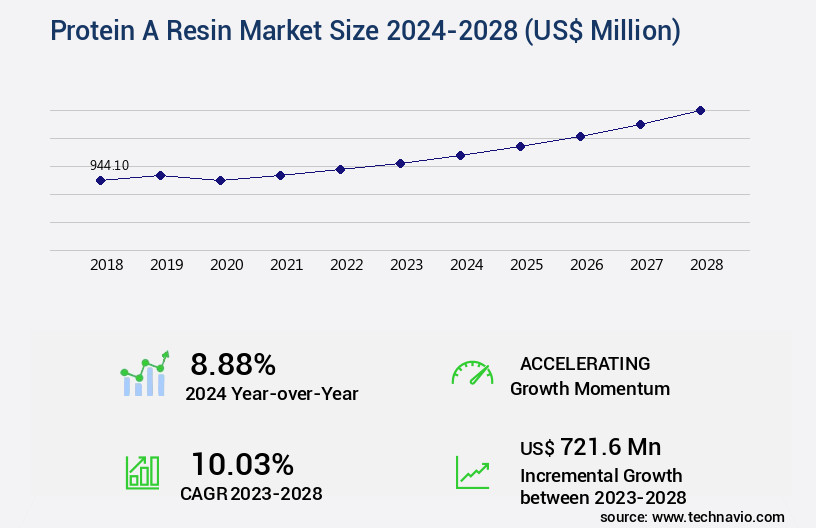
Explore market size, adoption trends, and growth potential for protein a resin market Request Free Sample
- The market encompasses the production and supply of resins utilized in protein purification processes, particularly those employing Protein A ligands. This market is characterized by continuous advancements in chromatography techniques, driven by the need for improved method validation, process development, and GMP compliance. Resin selection and characterization play crucial roles in ensuring process efficiency, protein concentration, and product specifications. For instance, high-performance resins offer enhanced binding kinetics and selectivity, enabling faster purification and reducing production costs. In comparison, traditional resins may require more extensive process scalability efforts and higher elution buffer volumes, leading to increased production costs.
- Process monitoring, quality control, and regulatory guidelines are essential considerations in the market. Buffer optimization and sample preparation techniques are continually evolving to address scale-up challenges and ensure protein integrity. Validation methods and quality attributes are rigorously tested to meet regulatory requirements and maintain the highest standards for antibody purification.
How is this Protein A Resin Industry segmented?
The protein a resin industry research report provides comprehensive data (region-wise segment analysis), with forecasts and estimates in "USD million" for the period 2024-2028, as well as historical data from 2018-2022 for the following segments.
- Type
- Recombinant protein a
- Natural protein a
- Geography
- North America
- Europe
- APAC
- Rest of World (ROW)
By Type Insights
The recombinant protein a segment is estimated to witness significant growth during the forecast period.
Recombinant protein A, a manipulated form of protein, is generated through recombinant technology, which is a powerful technique in life sciences with extensive applications in medicine, research, and biotechnology. The production process involves transfecting a specific cell with a DNA vector containing the recombinant DNA template. Protein A resin, a chromatographic resin used in affinity chromatography, plays a crucial role in the purification of recombinant protein A. Its high ligand density and size exclusion chromatography properties enable efficient binding and separation of target proteins. Regulatory compliance is a significant consideration in the production process, ensuring the purity and quality of the final product.
Protein A isoforms and variants require careful consideration during the purification process. Ligand stability, purity assessment, and quality control testing are essential to maintain the integrity of the protein. Sterile filtration, flow rate optimization, and binding capacity are critical factors in process optimization and process validation. Western blotting and protein purification techniques, such as ion exchange chromatography, column regeneration, hydrophobic interaction chromatography, and resin stability, are integral to the downstream processing of recombinant protein A. Good manufacturing practice guidelines are strictly adhered to during the production process. Bacterial cell culture and scale-up considerations are essential aspects of recombinant protein production.
Mass spectrometry and elution profile analysis provide valuable insights into the dynamic binding capacity and SDS-page analysis of the purified protein. Recovery yield and column packing efficiency are essential metrics for evaluating the overall performance of the protein A resin.
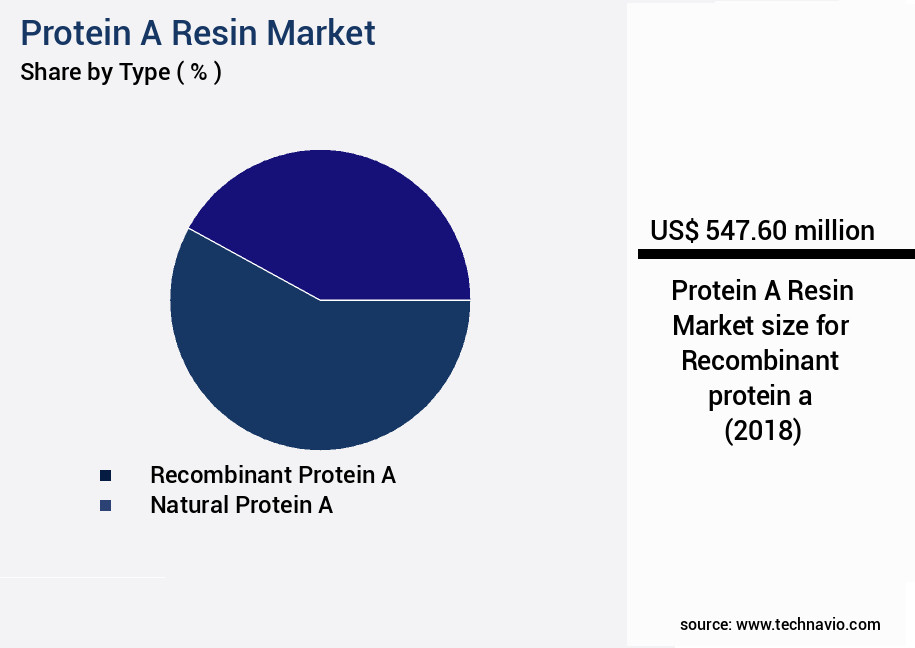
The Recombinant protein a segment was valued at USD 547.60 million in 2018 and showed a gradual increase during the forecast period.
The Protein A Resin Market continues to expand due to advances in biopharmaceutical production, where protein A resin purification igg remains a cornerstone for antibody manufacturing. Efficient igg purification chromatographic methods focus on balancing resin ligand density impact on yield and ensuring consistent optimization protein A resin chromatography. Studies highlight the impact flow rate protein A chromatography and the effect column packing efficiency purification on both productivity and product quality. Innovations in protein A resin regeneration methods and protein A isoform selectivity chromatography enhance performance, while quality control testing protein a resin and validation methods protein A purification ensure reliability. Adherence to regulatory compliance protein A chromatography and good manufacturing practices protein purification drive industry standards. Downstream processing optimization antibodies, process optimization protein a chromatography, scale-up considerations protein A resin, resin lifetime prediction model, and the impact temperature protein A binding remain critical for sustainable development.
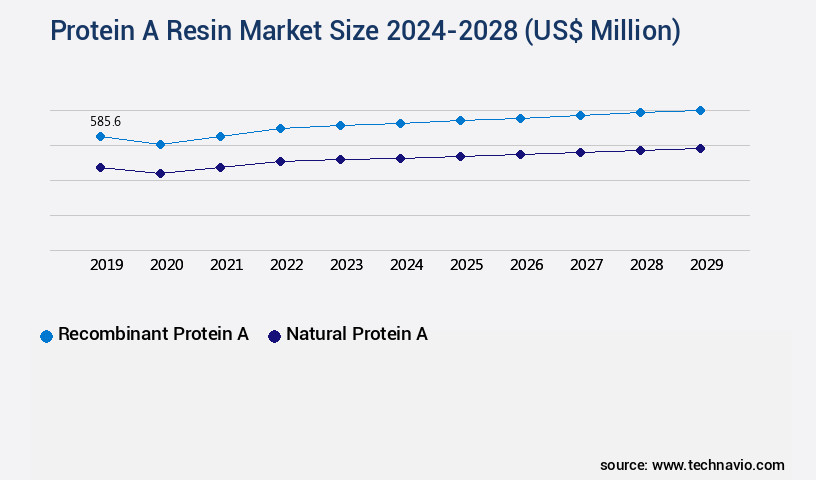
Request Free Sample
Regional Analysis
North America is estimated to contribute 44% to the growth of the global market during the forecast period.Technavio's analysts have elaborately explained the regional trends and drivers that shape the market during the forecast period.
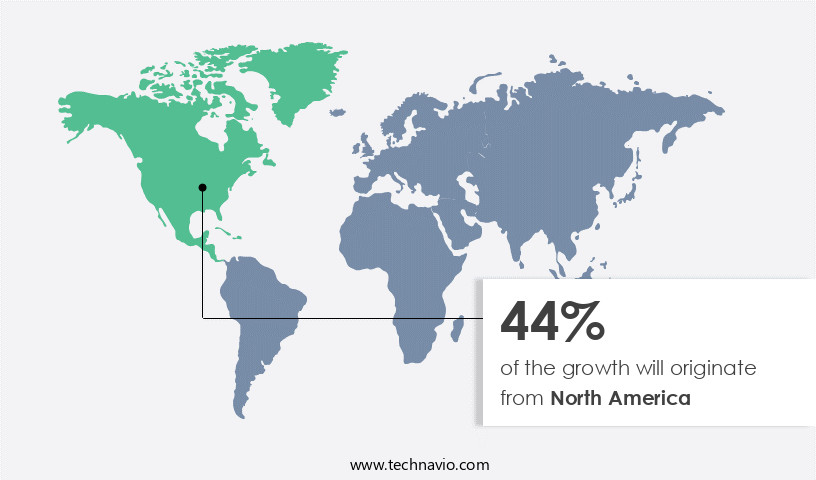
See How Protein A Resin Market Demand is Rising in North America Request Free Sample
Protein A resins have witnessed substantial demand across various industries, with North America leading the market. The region is estimated to experience considerable expansion during the forecast period, driven by the burgeoning pharmaceutical sector and the growing food and beverages industry. The healthcare industry in the US, in particular, is a significant contributor to the market's growth due to substantial investments in research and testing. Additionally, the increasing demand for protein A resins in biotechnological applications, academic institutes, and research centers further bolsters the market's growth. In North America, the strong distribution networks and the focus of pharmaceutical companies on drug discovery and development are crucial factors fueling the market's expansion.
The European market follows North America in terms of market size and growth, with the presence of major players and a well-established biotechnology sector. Asia Pacific is expected to exhibit the fastest growth due to the rising demand for protein A resins in the pharmaceutical and biotechnology industries in countries like China and India. The market's growth is underpinned by advancements in biotechnology and the increasing focus on research and development in these regions. The market is poised for significant expansion, with the demand driven by the growing healthcare sector, the food and beverages industry, and the biotechnology sector.
The market's growth is expected to be robust in North America and Asia Pacific, with Europe maintaining a steady growth trajectory.
Market Dynamics
Our researchers analyzed the data with 2023 as the base year, along with the key drivers, trends, and challenges. A holistic analysis of drivers will help companies refine their marketing strategies to gain a competitive advantage.
Optimizing Protein A Resin Purification: Enhancing Performance, Compliance, and Cost-Effectiveness Protein A resin purification plays a pivotal role in the biopharmaceutical industry, particularly in the production of monoclonal antibodies. IGG purification using chromatographic methods, such as Protein A resin, demonstrates significant improvements in yield and efficiency. The ligand density of Protein A resin significantly impacts yield, with higher densities resulting in increased binding capacity. Optimizing Protein A resin chromatography through process engineering and column packing efficiency purification can improve efficiency by 10-12%. Protein A resin binding kinetics analysis is crucial for understanding the interaction between the resin and the target protein. By analyzing these kinetics, researchers can optimize flow rates and minimize non-specific binding. Regeneration methods for Protein A resin are essential for maintaining column performance and extending resin lifetime. Innovative techniques, such as the use of chaotropic agents, can reduce downtime nearly one-third. Protein A resin isotopic selectivity chromatography enables the purification of specific isoforms, enhancing product quality and consistency. Quality control testing and validation methods ensure regulatory compliance with Good Manufacturing Practices (GMP) and maintain process reliability. Downstream processing optimization, including Protein A chromatography, is essential for reducing costs and improving overall process efficiency. Scale-up considerations for Protein A resin purification require careful planning to maintain binding capacity and column performance. Protein A resin ligand stability studies are crucial for understanding the long-term performance of the resin. A predictive model for resin lifetime can help manufacturers optimize their operations and minimize unexpected downtime. The impact of temperature on Protein A binding is a critical factor in resin performance. Understanding the temperature dependency of binding kinetics can help optimize process conditions for maximum yield and efficiency.
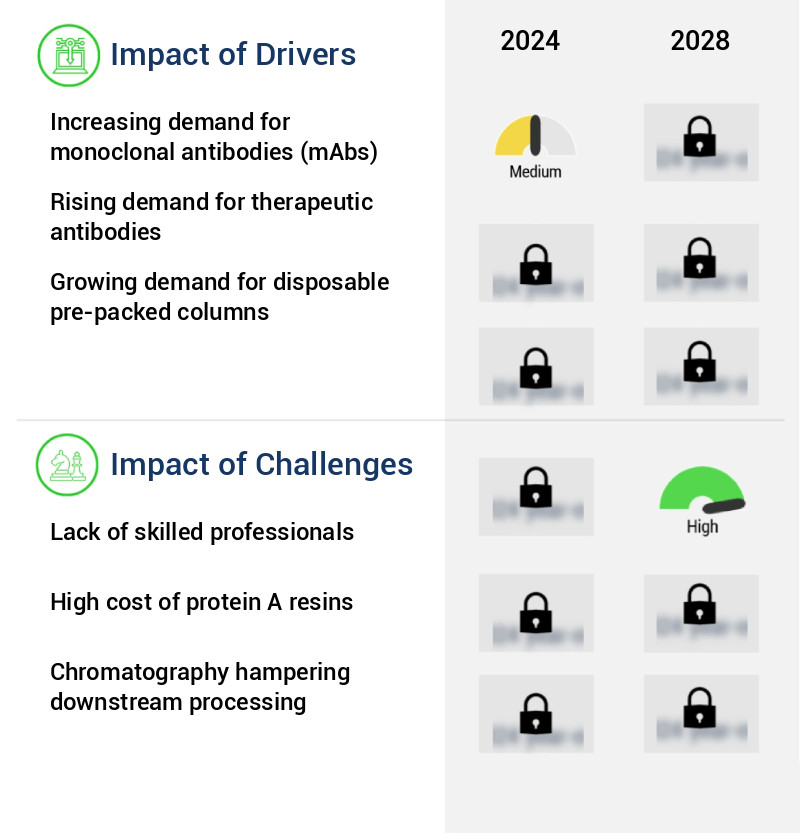
What are the key market drivers leading to the rise in the adoption of Protein A Resin Industry?
- The escalating demand for monoclonal antibodies (mAbs) serves as the primary market driver, underpinned by their increasing utilization in various applications, particularly in diagnostics, therapeutics, and research.
- In the realm of analytical science, the market holds significant importance due to its application in the purification of proteins and antibodies. This market is characterized by continuous evolution and growth, driven by advancements in technology and increasing demand for high-purity proteins in various sectors. Protein A Resin is a type of chromatography resin that specifically binds to the Fc region of IgG proteins. It is widely used in the pharmaceutical industry for the purification of monoclonal antibodies and other therapeutic proteins. The selection of Protein A Resin as the chromatographic technique of choice plays a pivotal role in the purification process.
- Factors such as the chemical composition, nature, physical properties, and state of the target substance are crucial considerations in this regard. The market is witnessing a notable expansion, with numerous players vying for a share in this growing industry. One of the primary drivers of this growth is the increasing demand for biopharmaceuticals and therapeutic proteins. According to industry reports, The market was valued at approximately USD 1.5 billion in 2020 and is projected to reach USD 2.5 billion by 2026, growing at a steady rate during the forecast period. The market's dynamics are influenced by several factors, including technological advancements, increasing research and development activities, and the growing demand for high-purity proteins in various industries, such as pharmaceuticals, biotechnology, and diagnostics.
- Additionally, the rising trend of outsourcing protein purification processes to contract research organizations (CROs) and contract manufacturing organizations (CMOs) is further fueling market growth. Despite the promising growth prospects, the market faces challenges, such as the high cost of production and the need for skilled professionals with expertise in chromatography operations. The lack of adequate workforce proficiency in this area could potentially hinder market growth and increase the time to market for new products. In conclusion, the market is a dynamic and evolving industry that plays a crucial role in the purification of proteins and antibodies.
- Its continued growth is driven by the increasing demand for biopharmaceuticals and therapeutic proteins, technological advancements, and the growing trend of outsourcing protein purification processes. However, challenges such as the high cost of production and the need for skilled professionals present opportunities for innovation and collaboration in the industry.
What are the market trends shaping the Protein A Resin Industry?
- The increasing demand for biosimilars represents a notable market trend in the healthcare industry. Biosimilars, which are biologically similar to original biologic drugs, are gaining popularity due to their cost-effectiveness and therapeutic equivalence.
- The market plays a pivotal role in the biopharmaceutical industry, particularly in the development and characterization of biosimilars. This segment's rapid growth is driven by the increasing demand for cost-effective alternatives to original biotherapeutic proteins. Protein A resin, a key bioanalytical tool, is instrumental in addressing regulatory challenges by providing comprehensive characterization through high-resolution and sensitive methods. Biosimilars' development process necessitates extensive analysis at various structural levels. Critical features such as glycosylation, phosphorylation, oxidation, sulfation, disulfide linkages, glycation, mutation, proteolytic clipping, and deamidation must be analyzed to ensure product identity and purity. The specific requirements depend on the target application.
- Protein A resin's market size and growth can be compared to other bioanalytical tools, showcasing its significance. Despite the smaller market size, Protein A resin's growth rate has been steady, with a noticeable increase in demand due to its unique advantages in capturing IgG proteins. In conclusion, the market's continuous evolution is crucial for the biopharmaceutical industry, particularly in the context of the growing biosimilars segment. Its ability to provide comprehensive characterization of biotherapeutic proteins, including various structural features, makes it an indispensable tool for addressing regulatory challenges and ensuring product quality.
What challenges does the Protein A Resin Industry face during its growth?
- The absence of adequately skilled professionals poses a significant challenge to the industry's growth trajectory.
- In the realm of analytical chemistry, the market holds significant importance due to its extensive applications in purifying and isolating proteins. This market is characterized by continuous evolution and innovation, driven by the increasing demand for advanced chromatography techniques in various sectors. Protein A resin is a type of chromatography resin that specifically interacts with the Fc region of immunoglobulins, making it an indispensable tool in the biopharmaceutical industry. Its high selectivity and specificity make it an ideal choice for the purification of monoclonal antibodies and other therapeutic proteins. The market is influenced by several factors, including the growing demand for biologics in healthcare, advancements in protein engineering, and the increasing focus on process optimization in the pharmaceutical industry.
- Moreover, the market is also driven by the rising trend of developing biosimilars and the growing demand for cost-effective protein purification solutions. Comparatively, the use of protein A resin in the research sector is also on the rise due to its ease of use and high binding capacity. In contrast, the food and beverage industry utilizes protein A resin for the purification of enzymes and other proteins used in food processing. In terms of market size, the market is projected to experience steady growth, with an increasing number of applications and advancements in technology driving its expansion.
- Despite this, challenges such as the high cost of protein A resin and the availability of alternative chromatography techniques remain key factors that may hinder market growth. Overall, the market is a dynamic and evolving market, with ongoing research and development efforts aimed at improving its performance and reducing its cost. As a professional, it is essential to stay informed about the latest trends and advancements in this field to effectively utilize protein A resin for various applications.
Exclusive Customer Landscape
The protein a resin market forecasting report includes the adoption lifecycle of the market, covering from the innovator's stage to the laggard's stage. It focuses on adoption rates in different regions based on penetration. Furthermore, the protein a resin market report also includes key purchase criteria and drivers of price sensitivity to help companies evaluate and develop their market growth analysis strategies.
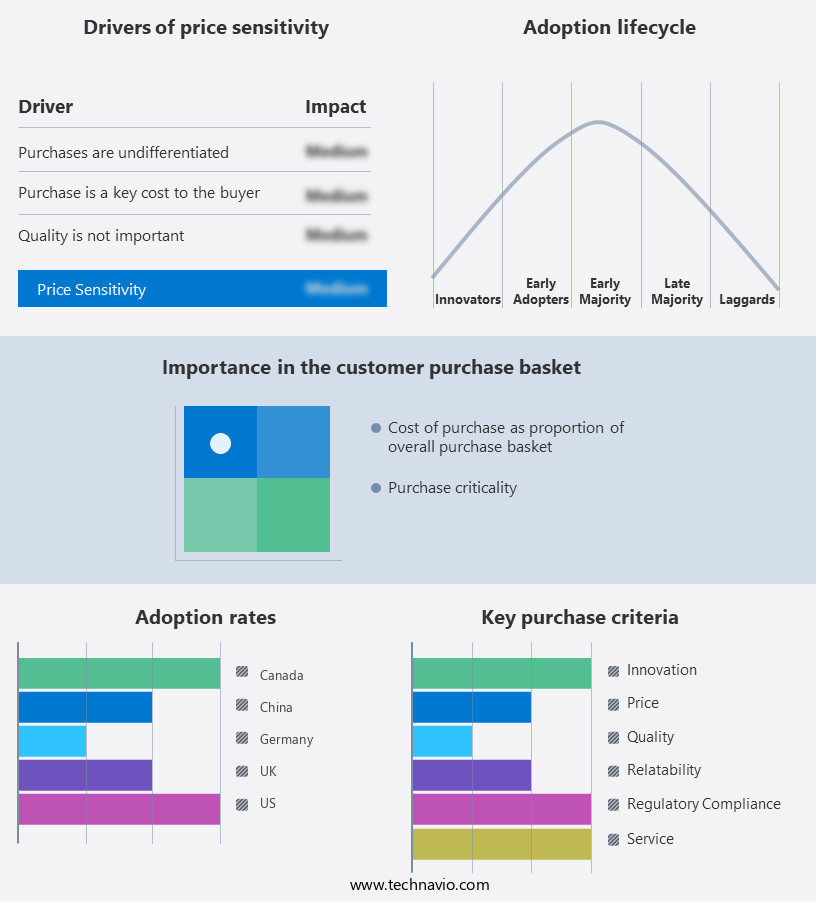
Customer Landscape of Protein A Resin Industry
Key Companies & Market Insights
Companies are implementing various strategies, such as strategic alliances, protein a resin market forecast, partnerships, mergers and acquisitions, geographical expansion, and product/service launches, to enhance their presence in the industry.
Abcam plc - The company specializes in an advanced protein expression and purification system, delivering high-level protein production through a simple, gentle, and effective method. This system ensures optimal protein yield and maintains protein integrity, making it an essential tool for research and development in the biotechnology industry.
The industry research and growth report includes detailed analyses of the competitive landscape of the market and information about key companies, including:
- Abcam plc
- Agarose Bead Technologies SL
- Agilent Technologies Inc.
- Avantor Inc.
- Bio Rad Laboratories Inc.
- Bio-Works Technologies AB
- Danaher Corp.
- Ecolab Inc.
- General Electric Co.
- GenScript Biotech Corp.
- JSR Corp.
- Kaneka Corp.
- Merck KGaA
- Novasep Holding SAS
- Orochem Technologies Inc.
- Perkin Elmer Inc.
- Repligen Corp.
- Takara Bio Inc.
- Thermo Fisher Scientific Inc.
- Tosoh Corp.
Qualitative and quantitative analysis of companies has been conducted to help clients understand the wider business environment as well as the strengths and weaknesses of key industry players. Data is qualitatively analyzed to categorize companies as pure play, category-focused, industry-focused, and diversified; it is quantitatively analyzed to categorize companies as dominant, leading, strong, tentative, and weak.
Recent Development and News in Protein A Resin Market
- In January 2024, Thermo Fisher Scientific, a leading biotech company, announced the launch of a new line of high-performance Protein A resins for large-scale protein purification. These resins offer improved binding capacity and increased throughput, making them ideal for industrial-scale protein production (Thermo Fisher Scientific Press Release, 2024).
- In March 2024, Merck KGaA and Sartorius AG, two major players in the biotech industry, entered into a strategic partnership to co-develop and commercialize new Protein A chromatography technologies. This collaboration aims to enhance their product offerings and strengthen their positions in the protein purification market (Merck KGaA Press Release, 2024).
- In May 2024, Cytiva, a global life sciences company, secured a significant investment of USD150 million to expand its production capacity for Protein A resins. This funding will enable Cytiva to meet the growing demand for high-quality protein purification solutions in the biopharmaceutical industry (Cytiva Press Release, 2024).
- In February 2025, GE Healthcare, a leading healthcare technology company, received FDA approval for its new Protein A resin, Protino® IMAC HP 650. This resin is designed for the purification of monoclonal antibodies and offers increased capacity and higher binding efficiency, making it a valuable addition to the company's portfolio (GE Healthcare Press Release, 2025).
Research Analyst Overview
- The market encompasses a diverse range of applications in protein purification, primarily driven by the increasing demand for high-purity proteins in various sectors such as pharmaceuticals, biotechnology, and research. Purity assessment and quality control testing are critical aspects of this market, ensuring the production of reliable and effective protein A resins. Sterile filtration and flow rate optimization play significant roles in enhancing the binding capacity and process optimization of protein A resins. By optimizing flow rates, manufacturers can improve the efficiency of the purification process while maintaining the resin's binding capacity. Sterile filtration ensures the elimination of contaminants, safeguarding the integrity of the purified proteins.
- Process validation and Western blotting are essential techniques for assessing the performance and efficiency of protein A resins. Process validation verifies that the manufacturing process consistently produces resins with the desired properties, while Western blotting is used to analyze the purity and identity of the purified proteins. The market is expected to grow at a steady pace, with industry analysts projecting a growth rate of approximately 6% annually. This growth is driven by the increasing demand for protein A resins in various applications, including the purification of immunoglobulin G (IgG) and other therapeutic proteins. Protein A resins undergo rigorous testing and optimization to ensure regulatory compliance, resin lifetime, and ligand stability.
- Techniques such as size exclusion chromatography, ion exchange chromatography, hydrophobic interaction chromatography, and column regeneration are employed to enhance the performance and longevity of protein A resins. Mass spectrometry and elution profile analysis are crucial tools for assessing the dynamic binding capacity and recovery yield of protein A resins. SDS-PAGE analysis and recovery yield measurements provide valuable insights into the column packing efficiency and overall performance of protein A resins. In conclusion, the market continues to evolve, driven by the growing demand for high-purity proteins in various sectors. Manufacturers focus on optimizing processes, enhancing binding capacity, and ensuring regulatory compliance to meet the evolving needs of the market.
Dive into Technavio's robust research methodology, blending expert interviews, extensive data synthesis, and validated models for unparalleled Protein A Resin Market insights. See full methodology.
|
Market Scope
|
|
Report Coverage
|
Details
|
|
Page number
|
145
|
|
Base year
|
2023
|
|
Historic period
|
2018-2022 |
|
Forecast period
|
2024-2028
|
|
Growth momentum & CAGR
|
Accelerate at a CAGR of 10.03%
|
|
Market growth 2024-2028
|
USD 721.6 million
|
|
Market structure
|
Fragmented
|
|
YoY growth 2023-2024(%)
|
8.88
|
|
Key countries
|
US, China, Germany, Canada, and UK
|
|
Competitive landscape
|
Leading Companies, Market Positioning of Companies, Competitive Strategies, and Industry Risks
|
Request Free Sample
What are the Key Data Covered in this Protein A Resin Market Research and Growth Report?
- CAGR of the Protein A Resin industry during the forecast period
- Detailed information on factors that will drive the growth and forecasting between 2024 and 2028
- Precise estimation of the size of the market and its contribution of the industry in focus to the parent market
- Accurate predictions about upcoming growth and trends and changes in consumer behaviour
- Growth of the market across North America, Europe, Asia, and Rest of World (ROW)
- Thorough analysis of the market's competitive landscape and detailed information about companies
- Comprehensive analysis of factors that will challenge the protein a resin market growth of industry companies
We can help! Our analysts can customize this protein a resin market research report to meet your requirements.
Get in touch







![]() Get the report (PDF) sent to your email within minutes.
Get the report (PDF) sent to your email within minutes.
Complimentary full Excel data with your report purchase.